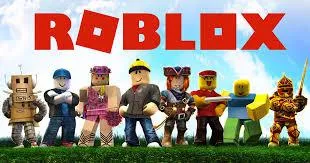
The Changing World of Roblox - A Lived Experience
Roblox has evolved dramatically over the years. What once started as a platform focused on creativity and play has increasingly shifted toward monetization. Today, Robux, the platform’s virtual currency, is no longer just for cosmetic upgrades—it’s often essential for progressing in many games. This shift has not only changed how players engage with Roblox but has also created financial and social pressures, particularly for young users who may not fully understand the implications of in-game purchases.
The Rise of Pay-to-Play Mechanics

Many Roblox experiences now require players to purchase game passes just to access certain levels or gain an advantage. This is particularly evident in military-style ranking games, where progression is often tied to spending money rather than skill or effort. Similarly, avatar customization—which was once a fun, free way to express creativity—has now become a paid feature, making self-expression on the platform increasingly exclusive.
Beyond gameplay, social pressure also plays a significant role. If a young player doesn’t have the same exclusive outfits, emotes, or game passes as their friends, they may feel left out. This shift in culture has turned what was once a level playing field into an environment where financial investment can determine social standing within the game.
A Real-Life Roblox Experience
A few years ago, my auntie’s grandson had no idea that in-game currency actually cost real money. Thinking Robux were just part of the game, he innocently spent nearly £80 on in-game purchases—completely unaware of the financial impact.
It wasn’t until my auntie checked her bank account that she realized what had happened. To her shock, the charges weren’t for everyday essentials but for virtual currency in a game! This moment of realization led her to take immediate action. She quickly set up parental controls on her iPad to prevent future accidental spending, ensuring that no more surprise charges would appear on her bank statements.
This experience is a stark reminder of how easy it is for kids to unknowingly rack up digital purchases—and why setting up parental controls is crucial in today’s gaming landscape.
The Need for Awareness & Parental Controls
The story of my auntie’s grandson isn’t unique. Many parents have found themselves in similar situations, realizing too late that their children have spent real money in digital spaces without understanding the consequences. This raises important questions:
Should games like Roblox do more to educate young users about in-game purchases?
How can parents and guardians better protect their children from unexpected spending?
Is the growing focus on monetization taking away from the original spirit of Roblox?
For families navigating the world of online gaming, setting up parental controls, discussing digital spending habits, and staying informed about game mechanics are crucial steps in preventing unwanted surprises.
Final Thoughts
Roblox is still a platform with incredible potential for creativity and social interaction, but its shift toward monetization has introduced new challenges. For young players, the line between virtual and real-world money can be blurry, making parental guidance more important than ever.
As the gaming industry continues to evolve, so must our awareness of the risks and responsibilities that come with it. By taking proactive steps, parents and guardians can ensure that gaming remains a fun, creative outlet rather than a financial pitfall.